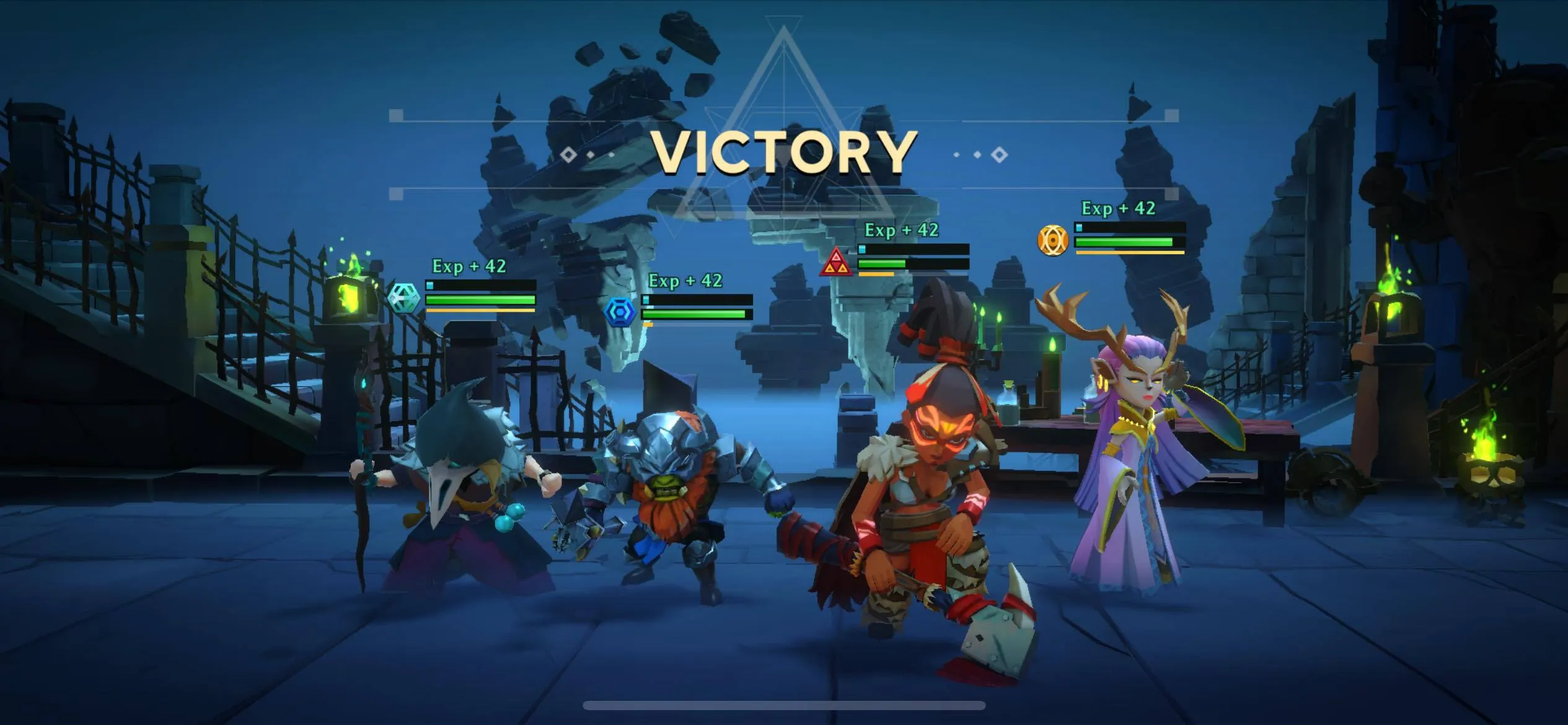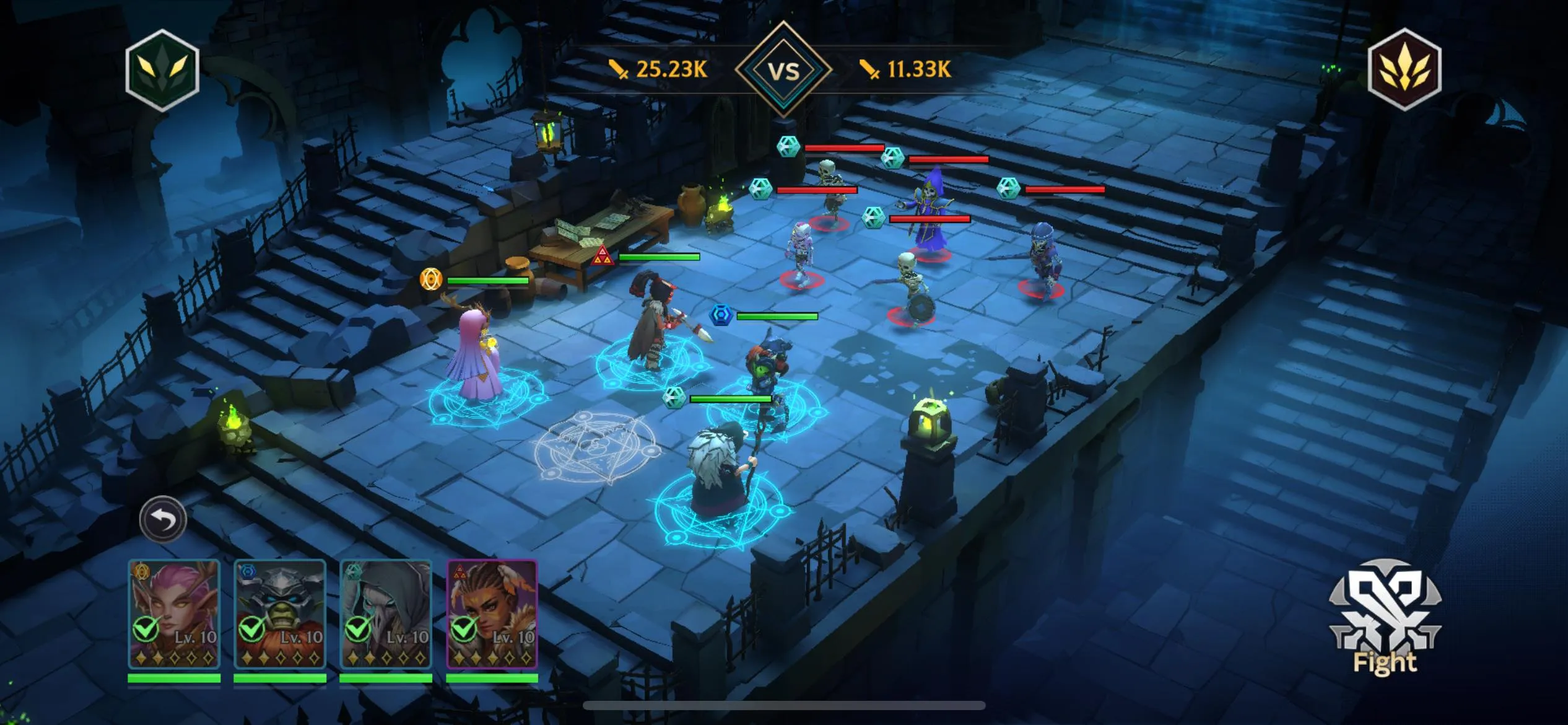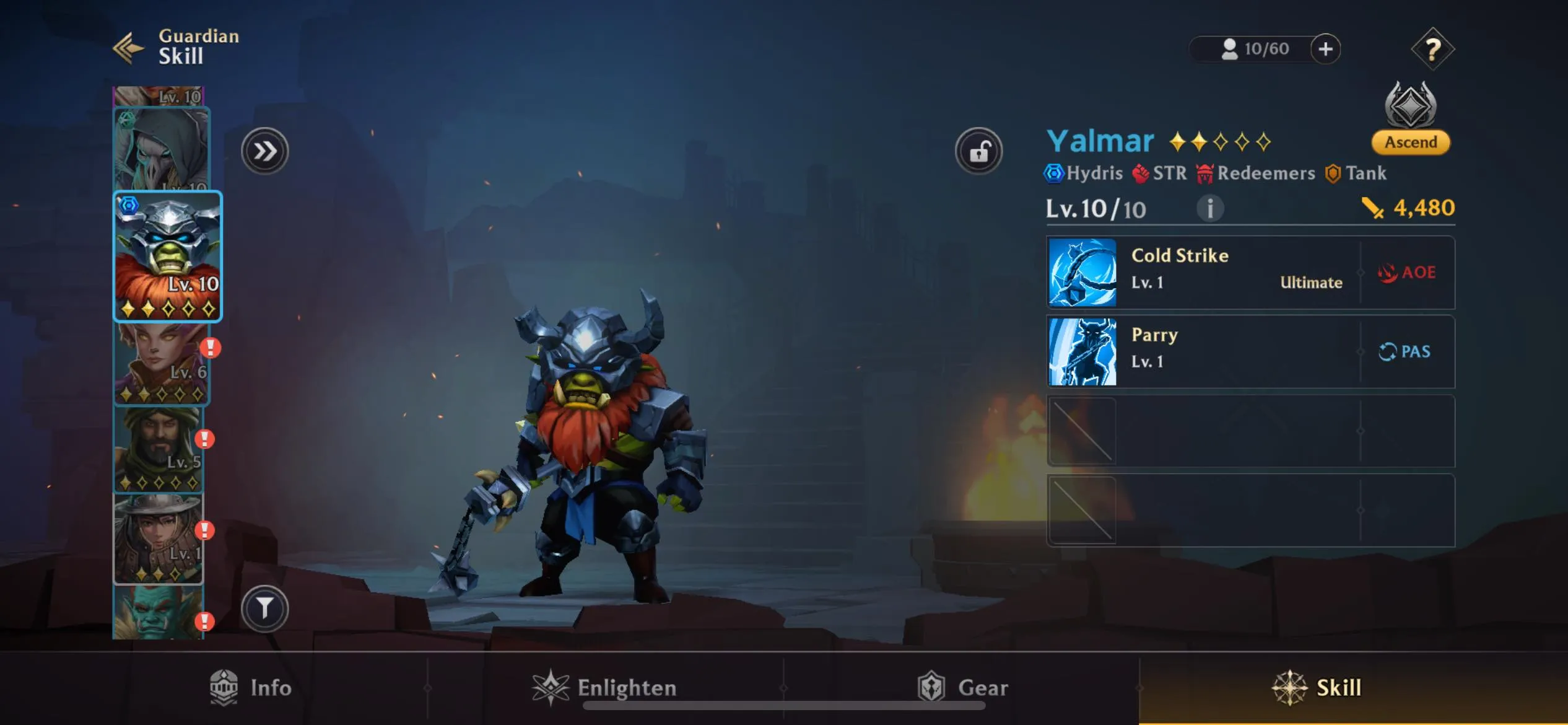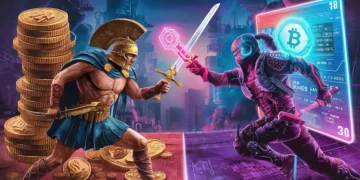Games have to find you at the right time. Well, this Ethereum game found me on the toilet.
My favorite gaming experiences have come when a game is enjoyable and perfectly fits into my life. Think Bloodborne finding me cooped up inside during the pandemic, or co-op gem It Takes Two when I wanted to bond with my partner.
Guild of Guardians meets you in those natural breaks in your day—as you’re taking a suspiciously long toilet break at work, waiting for the bus, or cooking dinner. This mobile fantasy game has enough complexity to keep you interested, yet thankfully packs a quick enough gameplay loop to easily pick up and put down.

Screenshot from Guild of Guardians. Image: Guild of Guardians.
Fight through dungeons
Guild of Guardians is a mobile trading card game on iOS and Android that draws from the rogue-lite and auto-battler genres for an addictive and convenient gameplay experience.
You’ll battle your way through dungeons, completing each one up to three times for maximum experience points and loot so that you can continue upgrading your squad. Every dungeon has multiple rooms full of enemies that you need to battle in order to get the final reward. Each room likewise has a range of enemies, loot boxes, and the odd neutral ground to heal or level up your gear.
You start off being able to field three guardians, gradually adding more as you level up. These range from tanks to mages and support guardians, and it’s critical to make sure your squad has a balanced combination of attributes. Once you’ve picked your party of guardians, you’ll carefully select your formation, ensuring to put the tanks at the front—and then click fight.
Taking inspiration from auto-battlers like Riot’s Teamfight Tactics (TFT), your guardians will fight automatically for you. In Guild of Guardians, however, you choose when each one casts their ultimate ability. This strikes a great balance between being passive enough to play in the natural lulls of your day while still being engaging—and requiring at least a little attention.

Screenshot from Guild of Guardians. Image: Guild of Guardians.
As you pass through the rooms of each dungeon, you’re asked to select a rune which will give you a slight buff going forward. Sometimes you have the misfortune of picking up a “curse of fate,” which will buff your enemy and make them more powerful. This gives enough variety to each run of a dungeon, as I adjust my strategy based on my squad and the runes I’ve picked up.
This whole loop doesn’t take more than a few minutes at a time, with lots of downtime to put the phone down, continue on with real life, and then return. This is why it’s perfect for those natural pauses in your day.
My only complaint when it comes to the core gameplay is that “domain synergies”—and how they interact with each other—feel hidden. Even once you search it out, it doesn’t feel wholly clear or unique. It appears that having a number of characters from the same “domain” slightly buffs your team, but the buff is fairly similar for each domain… so it feels slightly redundant.
In other auto-battlers, this is often the most interesting part of the game—so I’d love to see Guild of Guardians develop out some complexity here, such as synergies that grant healing, the ability to stun, or something else unique.
Pimp out your party
After completing a few dungeons, you’ve probably collected enough resources to start really crafting a team that works for you.
Guild of Guardians has a pretty extensive character leveling and gear system that takes just as much as, if not more attention than the dungeon clearing. Each guardian has its own level going up to 30, which influences their health, attack, defense, as well as what skills they have available to unlock.
On top of this, you’re able to equip each character with gear such as armor, a wizard hat, or an ax to boost certain statistics. This all feels pretty intuitive, and when it’s not, the game thankfully holds your hand through it.

Screenshot from Guild of Guardians. Image: Guild of Guardians.
Until this point, I had not interacted with any crypto or NFT elements. I’d played the game every day for almost a week, progressing through the game just fine without any Web3 components. Once you sign into your Immutable Passport wallet, however, using a simple Gmail sign-in option, new benefits come your way.
Most notably, you’re able to “ascend” your guardians, which gives them a 30% boost across the board. By doing this, you’re turning the guardian into an NFT on the Ethereum scaling network Immutable zkEVM, allowing you to sell them on the secondary marketplace.
You can currently purchase the resources required to ascend a guardian for $6.99 for 40 Ascension Seals, but you can also earn them by topping leaderboards. How many seals are required varies depending on how popular the guardian is—but from what I saw, 31 Ascension Seals would do the job for most purple-rarity guardians.
Before doing this, Guild of Guardians game director Chris Clay encouraged me during a Zoom call to level my guardians up as much as possible. Ascending your guardians should be the last step in powering up your guardian, and a way for you to lock in the value you’ve put into the game.
As someone who has put countless hours (as well as a painful amount of money) into games that give nothing back, I like the idea of being able to sell my assets when I decide I don’t want to play anymore—the Web3 element of this game enables that.
Guild of Guardians has a brilliantly addictive gameplay loop. You’ll dive into dungeons attempting to get all the loot at the end. Failed to make it there? Then use any loot you can find to level up your squad, craft gear, or unlock new guardians to take you to that next level.
Now when I’m sitting on the throne, I’m not doom-scrolling on Twitter. I’m leveling up my guardians, fighting skeletons in the dungeons, and grinding to one day ascend my whole party in Guild of Guardians.
Edited by Andrew Hayward





















































































how to buy cheap clomid price cost of clomid price can i buy generic clomiphene without dr prescription get generic clomid without a prescription buy cheap clomid price cost of cheap clomiphene prices can you buy generic clomid without rx
More articles like this would make the blogosphere richer.
The thoroughness in this section is noteworthy.
buy zithromax generic – buy sumycin 250mg for sale flagyl 400mg us
buy rybelsus without prescription – buy cyproheptadine 4 mg without prescription purchase cyproheptadine without prescription
buy domperidone medication – domperidone drug buy flexeril online
inderal 20mg ca – order methotrexate 10mg without prescription methotrexate buy online
order amoxicillin sale – ipratropium oral order combivent generic
azithromycin pills – buy azithromycin online cheap order bystolic 20mg pills
buy augmentin cheap – atbioinfo.com buy cheap acillin
order esomeprazole 40mg for sale – https://anexamate.com/ buy generic esomeprazole
coumadin 5mg price – https://coumamide.com/ buy hyzaar no prescription
meloxicam 15mg ca – https://moboxsin.com/ mobic price
order prednisone online cheap – aprep lson order deltasone 40mg
how to buy ed pills – fast ed to take site buy ed pills for sale
amoxicillin tablets – buy generic amoxil over the counter amoxicillin online buy
order diflucan 200mg without prescription – on this site generic fluconazole
order cenforce 50mg online cheap – https://cenforcers.com/# buy cenforce online
does cialis lower your blood pressure – site cost of cialis for daily use
cialis prescription assistance program – https://strongtadafl.com/# buying cialis online
buy generic ranitidine over the counter – https://aranitidine.com/# order ranitidine 150mg online cheap
The thoroughness in this piece is noteworthy. https://gnolvade.com/
The reconditeness in this serving is exceptional. how much does prednisone 20 mg cost
More content pieces like this would urge the web better. augmentin where to buy